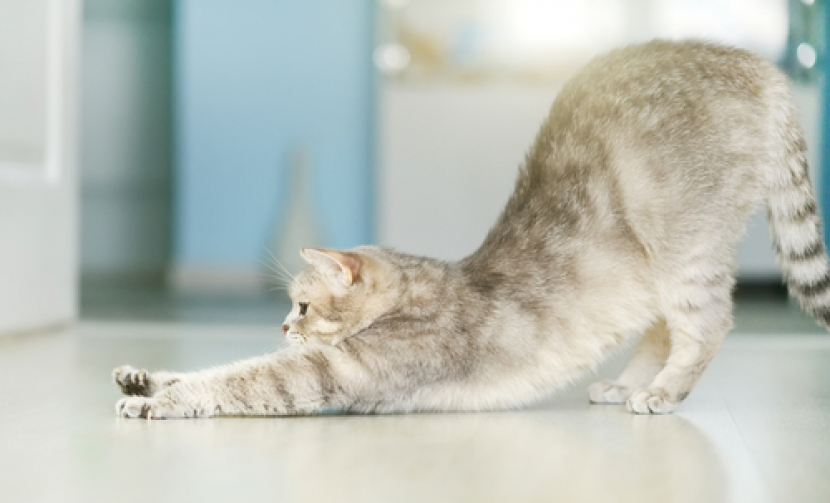What the Fuzz?
By Debbie Wyer on 28 February 2025

Have you ever noticed how animals always take time to stretch when they wake up?
Take Cookie, our pup, for example. No matter how excited she is to see us—tail wagging like a helicopter—she never skips her routine. She’ll leap off the sofa, do an updog, then a downdog (yep, that’s where yoga got the names!), and stretch every few steps before finally greeting us.
Now, think about what we do when we get up in the morning, or after sitting on the sofa, or after a long day at the computer. If you’re anything like me, probably… not much. We move from one task to the next without a second thought. But taking just a few moments to stretch, mobilise, or move differently can make a world of difference in releasing tension and keeping our bodies feeling good.
Daily mobilisation and stretching are key to keeping your body feeling free and flexible. A regular movement practice can:
✔ Improve posture
✔ Reduce aches and pains
✔ Increase circulation and send oxygen to the brain for clearer thinking
✔ Boost confidence by helping you move with ease
For example, sitting for long periods can cause tight hamstrings, which can make it harder to fully straighten your legs or even walk comfortably. Over time, these small restrictions build up and affect how we move.
So, what Is the Fuzz?
Gil Hedley, PhD, has spent nearly 30 years exploring the human body through hands-on dissection and encourages us to appreciate, explore, and embody its wonders. In his Fuzz Speech, he explains how our connective tissue (fascia) naturally develops “fuzz” overnight—thin layers of tissue that form between muscles. If we don’t stretch and move, this fuzz thickens and sticks, limiting mobility.
Essentially, every morning or if you are sat down for long periods of time we need to melt the fuzz! Think of it as doing a little ‘Kate Bush’ dance every time you get up (if you come to any of my classes, you know what I mean!).
Want to see it for yourself? Watch Gil Hedley’s Fuzz Speech on YouTube. (Warning: It contains real human dissection.)
Why Movement Matters
If you’ve ever had an injury, you’ll know how easy it is to start moving differently to protect the sore area. But when we stop using certain muscles properly, the fascia thickens and stiffens even more—creating restrictions that stretching alone may not be able to undo. Over time, we call it aging, but really, it’s a loss of movement.
Bodywork treatments like massage, osteopathy, and physiotherapy can all help release built-up restrictions—especially after an injury. But you don’t have to wait until you feel stiff and sore.
Join us for Pilates, where we incorporate MELT before each session—a method designed to restore the connection between your nervous system and fascia, allowing your body to recalibrate and move more freely.
What MELT can do for you:
· Restore natural balance and alignment
· Improve communication between your mind and body
· Refine your centre of gravity for better movement
· De-stress your nervous system, leaving you calmer and more grounded
· Support your body’s autopilot system (the one that protects and stabilises you)
· Help you catch pre-pain signals before they become real issues
If you’re curious about how MELT can help you melt your fuzz and feel more at home in your body, click here to contact me to book a trial class.

